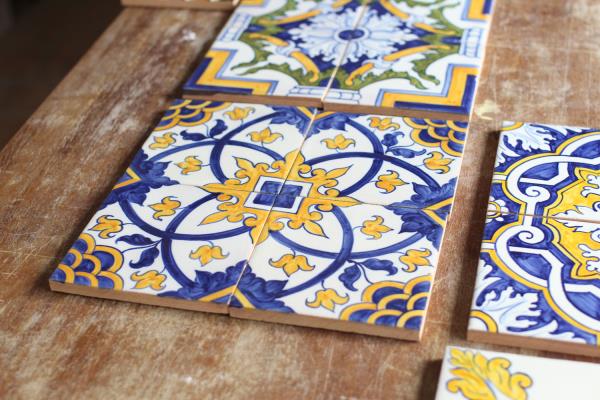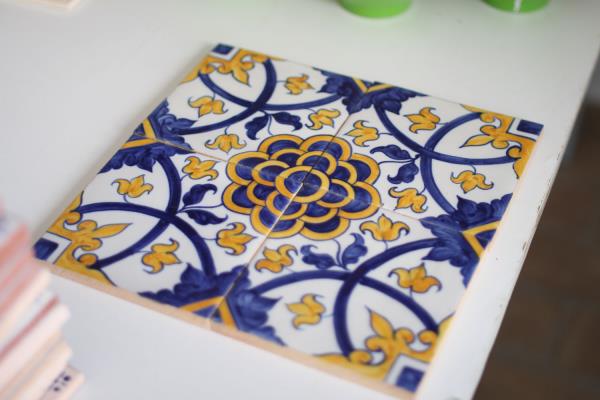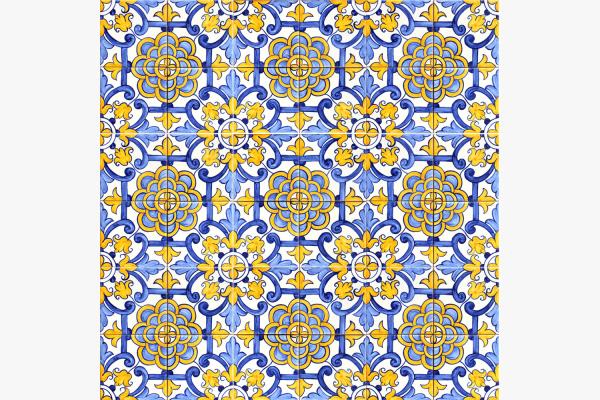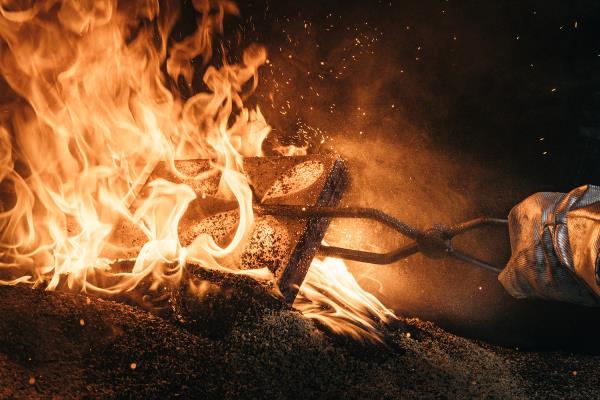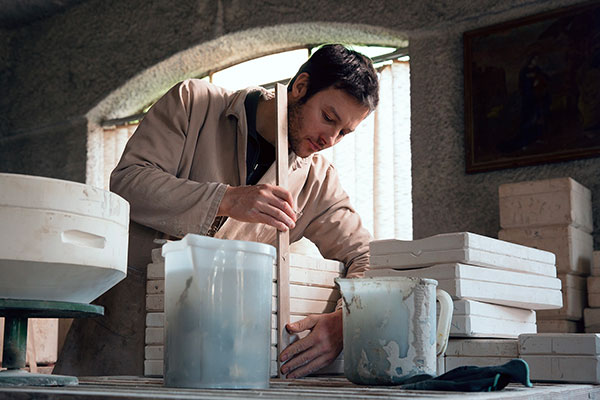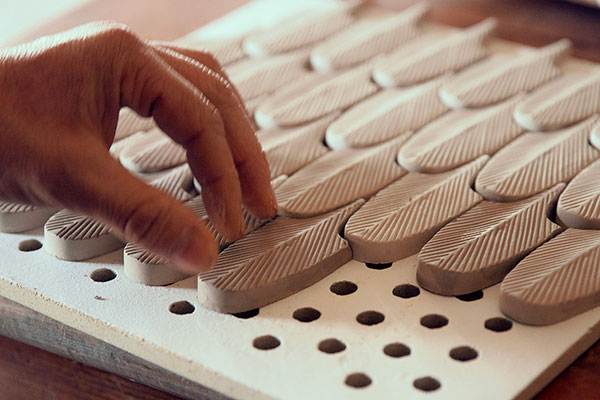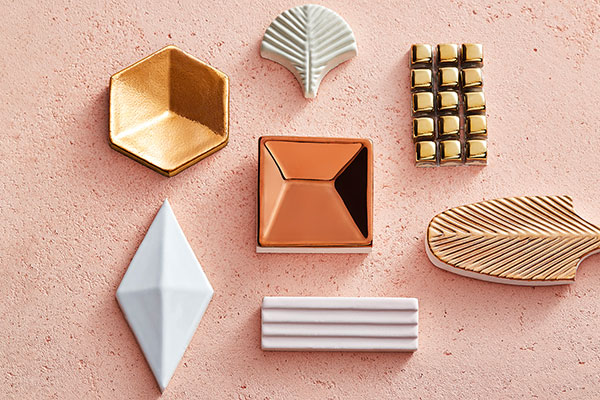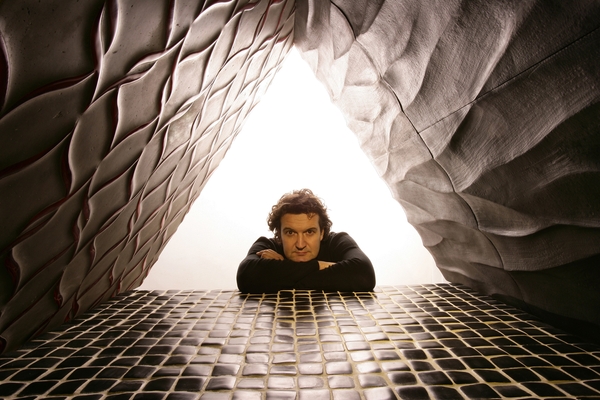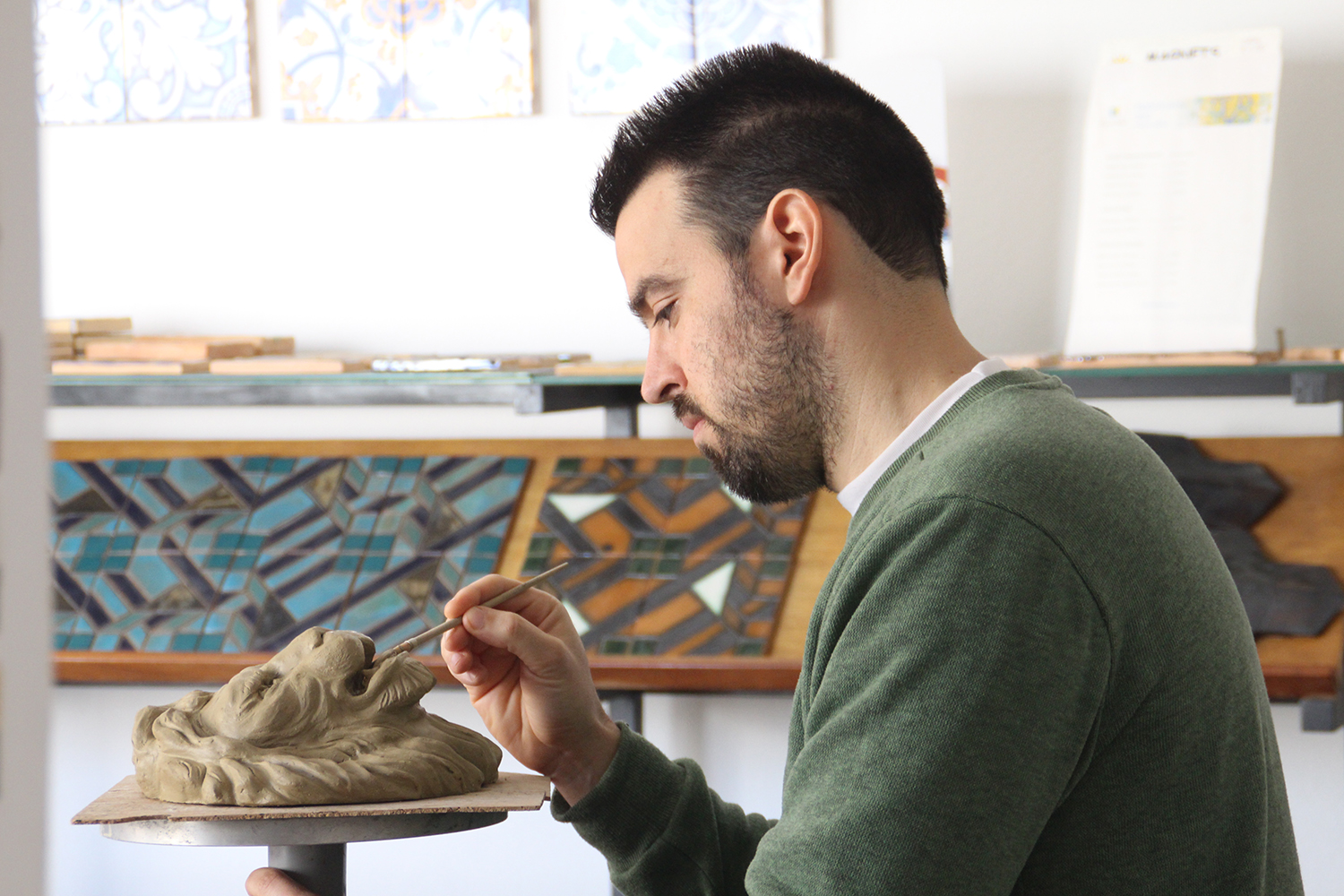
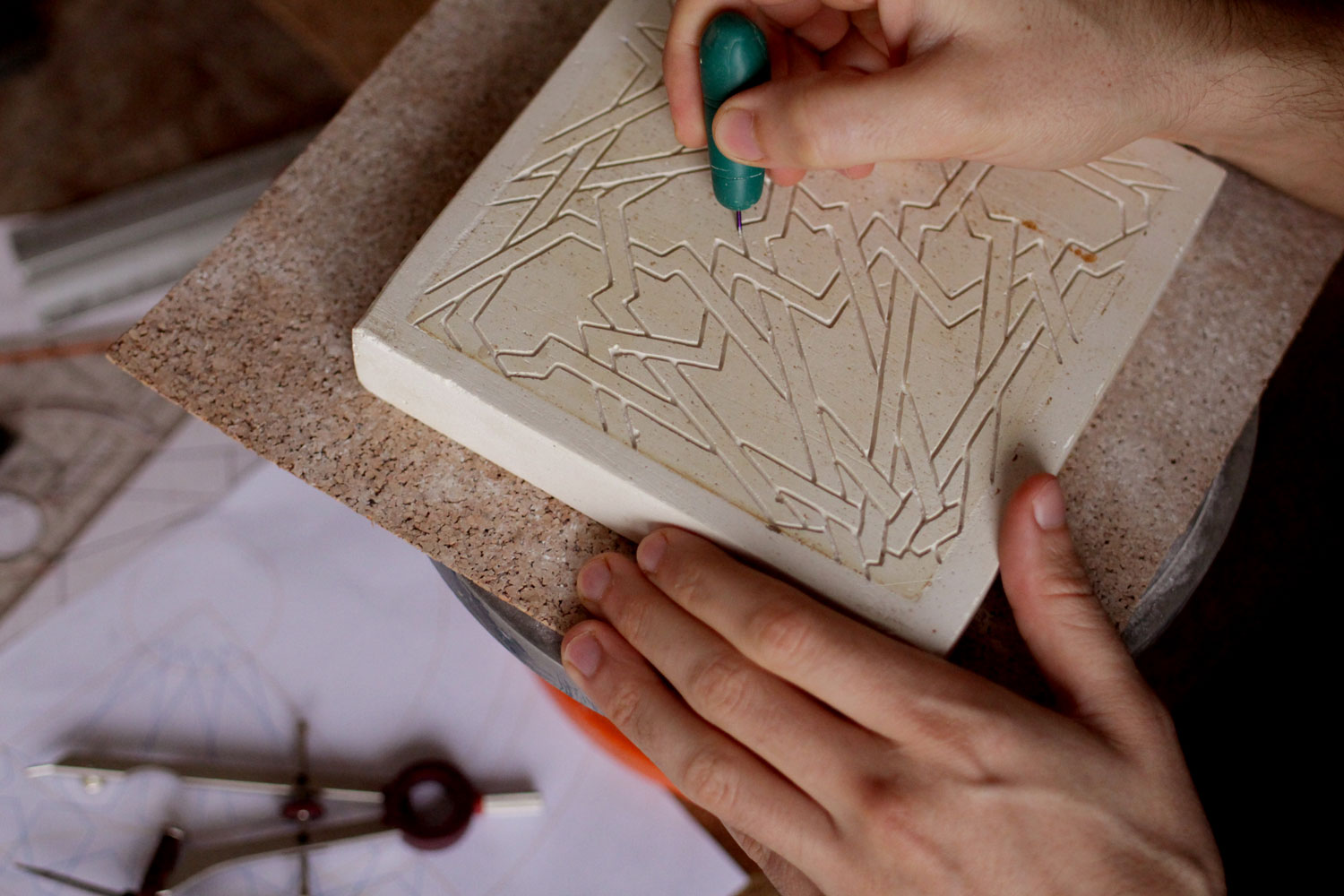
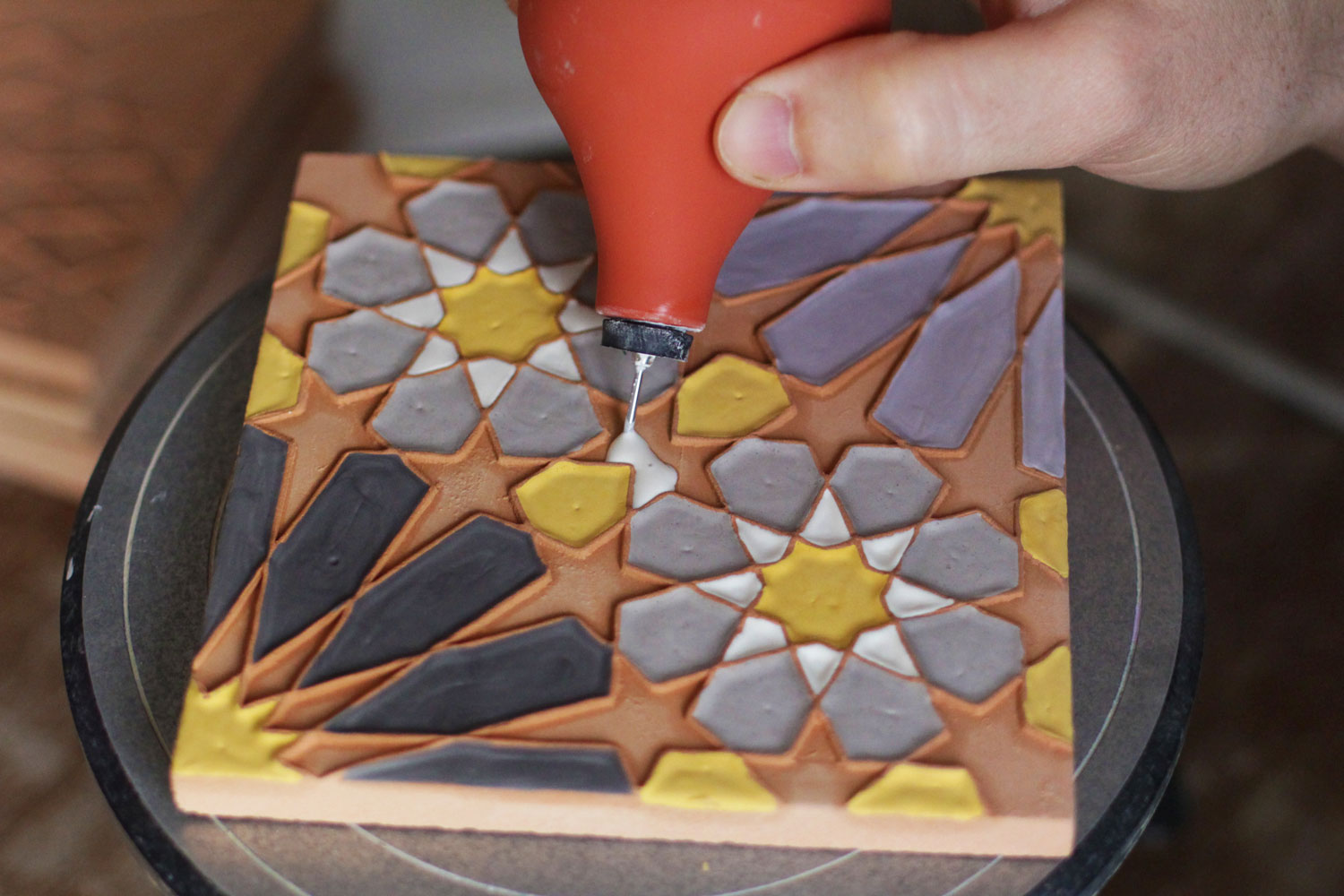
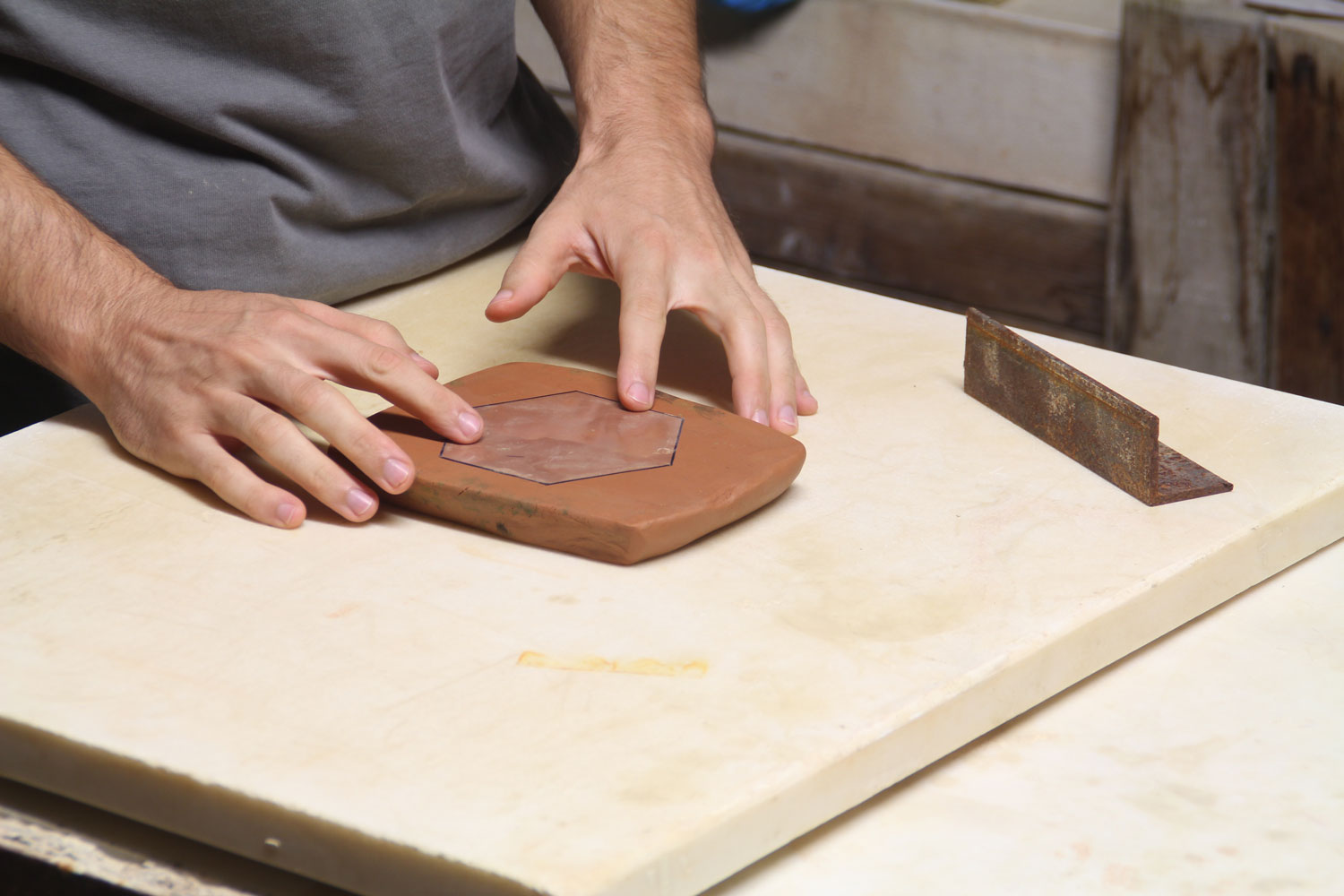
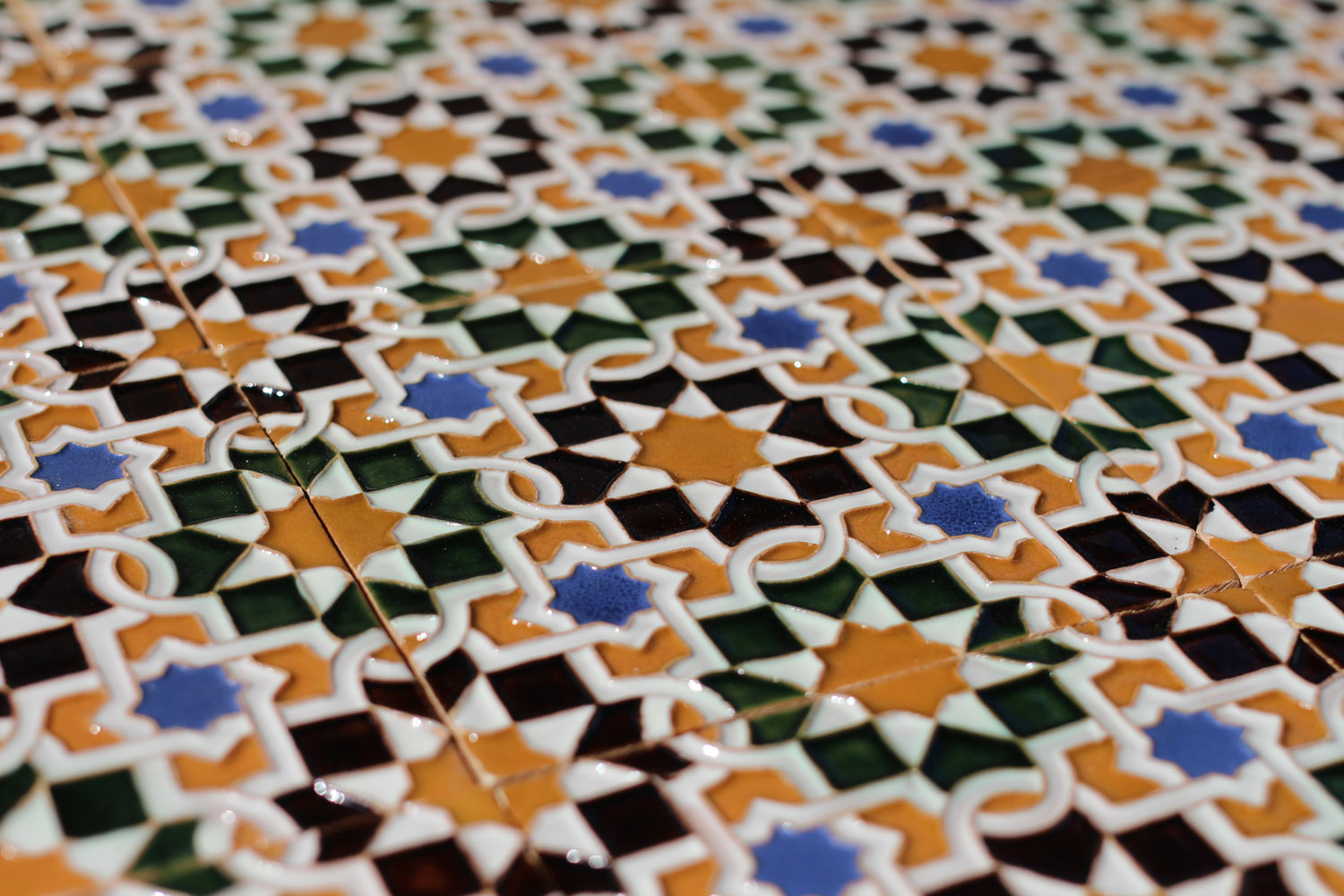





Custodian and innovator of the Azulejo technique
- Rui learnt the art of Portuguese Azulejo tilemaking from his mother
- He specialises in traditional tile reproductions
- He represents a young generation committed to continuing this traditional art
When Rui Mascarenhas’ mother opened her studio in 1989, she named it Aresta Viva after an ancestral Hispano-Moresque Azulejo technique. Azulejo tilemaking comes from the Arabic word azzelij (or al zuleycha, al zuléija, al zulaiju, al zulaco), which means little polished stone. Present in Portugal since the 16th century, this art is part of its cultural heritage. Until recently Rui worked alongside his sister Maria, and today he runs the atelier alone. “We studied design and landscape architecture but naturally gravitated back to the studio where we spent hours as children experimenting with clay and glazing.” Each piece is made in-house, from modelling to hand painting. Working simultaneously with the Portuguese Nacional Azulejo Museum and with architects in contemporary contexts enables Rui to contribute to the safeguarding of this art.
Interview
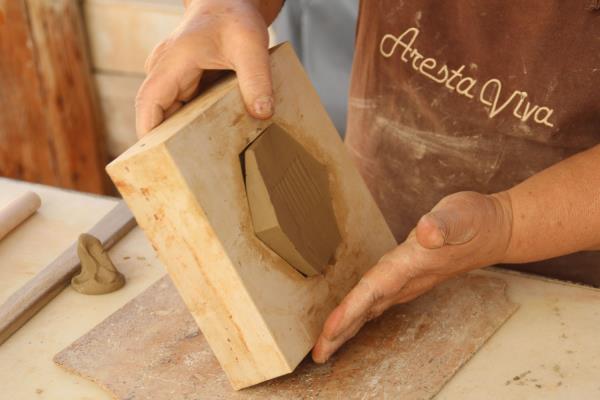
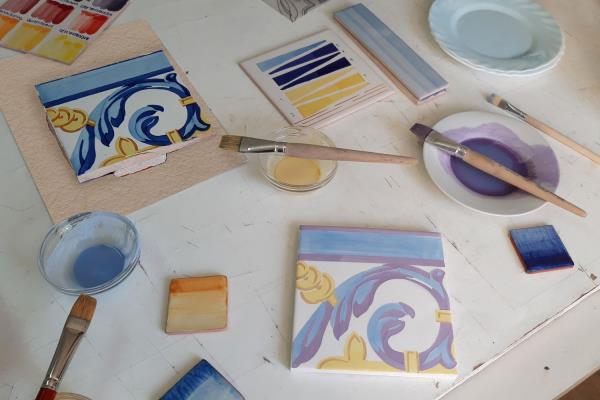
- Please could you explain the Aresta Viva technique?
- It is an ancient Hispano-Moresque technique where ridges are made in the damp clay to avoid colours from running into each other during the firing process. We also use other techniques, such as corda seca, or dry cord, where a groove is carved in the wet clay.
- How do you go beyond creating traditional azulejo tiles?
- We keep the various ancestral techniques alive especially through our reproduction work with the National Museum and private clients. However, as I studied design and my sister landscape architecture, we were able to bring innovation through design.
- How do you work?
- I know all the steps from designing and clay modelling, to hand painting and firing. I receive orders from architects, interior designers and private clients, sometimes for large-scale projects.
- What are some of the difficulties you face when making Azulejo tiles?
- It can be complicated to meet deadlines, as there is always an element of uncertainty. I may lose some pieces during the firing process. I include the customer in the process so we can savour the victory of overcoming challenges to achieve positive results.
Rui Mascarenhas is an expert artisan: he began his career in 2007
Works
Where
Rui Mascarenhas

